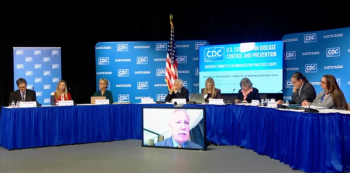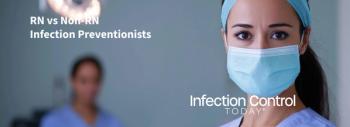
Hotel Study Helps Add to What We Know About Fomites Role in Disease Transmission
Its always just a little bit satisfying when the rest of the world catches up on the knowledge that infection control practitioners (ICPs) already have; what I mean is, it no longer feels as though youre the only ones talking about the need for awareness relating to the persistence of pathogens on inanimate objects. Check out this development: A group of researchers led by a team from the University of Virginia Health System found that adults infected with rhinovirus may contaminate many objects used in daily life. Most are aware that handshaking and other forms of skin-to-skin contact can result in catching someone elses cold, but many may assume that viruses cant live for very long on hard surfaces.
Dr. Owen Hendley, professor of pediatrics in the Division of Pediatric Infectious Diseases at the UVa Health System who presented the research, cautions that this assumption may not be completely true. To my surprise, in a hotel room occupied overnight by an adult with a cold, everything from television remote controls, telephones, light switches, and faucets were contaminated with rhinovirus, Hendley remarked.
To begin the study, people with colds were recruited to spend five hours awake in hotel rooms before going to bed, and two awake hours in their rooms the next morning. The volunteers had no visitors and were asked to wash their hands only after using the bathroom. At the time of check-out, participants were asked to identify objects they had touched. After they left, 10 of the touched objects in the subjects room were tested for the presence of rhinovirus; 35 percent of the objects had residual virus, demonstrating that people with colds do not have to be present for their germs to linger.
In order to infect an individual, germs must reach the eyes or the nose, usually by way of a persons own fingers. So researchers then set out to learn if germs lingering in the environment can make the leap from surfaces to fingers. In order to test this leap, researchers invited six of the participants to return to the hotel several months later. This time, virus-containing mucus taken at the time of the participants colds, which had been stored, was used to contaminate two sets of light switches, telephone key pads, and telephone handsets in two different rooms. In one room, the mucus was allowed to dry for one hour. In the second room, the mucus dried overnight. The participants were asked to dial phone numbers, hold the handsets and flip on light switches in both rooms. Sixty percent of the contacts with contaminated objects that dried for an hour resulted in rhinovirus transfer to fingertips. Thirty-three percent of contacts with objects that dried overnight resulted in rhinovirus transfer to fingertips.
While transmission of rhinovirus through dried nasal mucus on surfaces is not efficient, people still should understand that the virus remains available for transfer at least one day, Hendley admonishes. The next time you stay in a hotel, knowing that rhinovirus may be left from the last guest, you may wonder how meticulous the clean-up crew was in its work.
The same might be said for hospitals. For a related look at fomites role in disease transmission, please turn to page 26.
Until next month, bust those bugs!
Kelly M. Pyrek
Editor in Chief
Newsletter
Stay prepared and protected with Infection Control Today's newsletter, delivering essential updates, best practices, and expert insights for infection preventionists.






